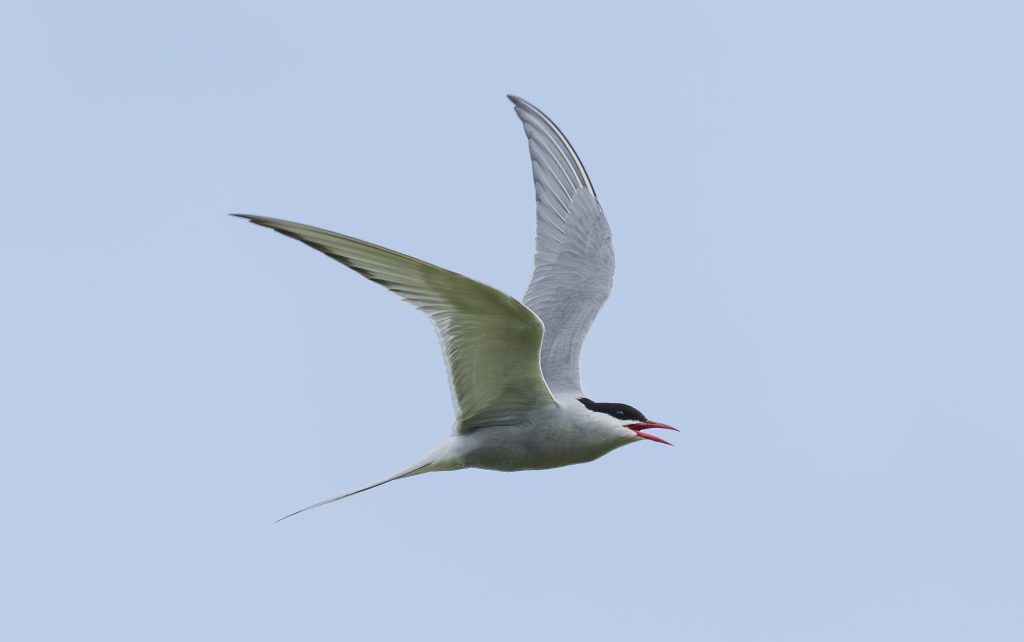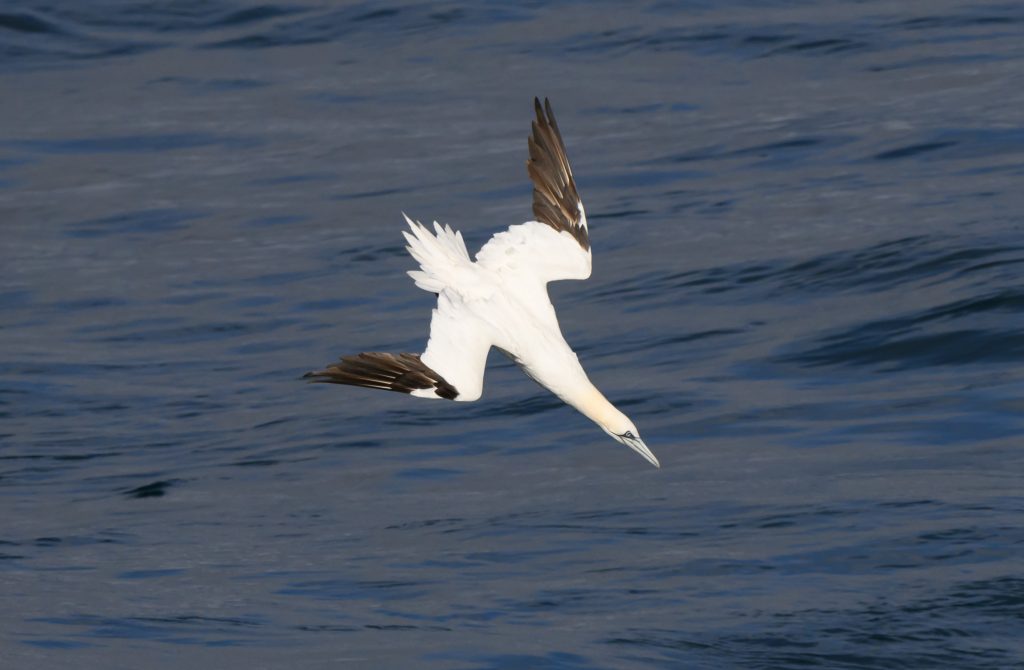 CLdN Heysham to Dublin 26 April 2025
CLdN Heysham to Dublin 26 April 2025
26 April 2025
We boarded the Pace at around 23.15 on Friday evening, and the weather was set to be fine and mild, with a moderate southerly breeze. Our welcome was friendly as always, and we were soon settled into our clean and comfortable cabins.
Up with the alarm and following a tasty breakfast we were on the bridge for just after 07.30 to begin the survey, with the weather conditions being bright with a sea mist at about 4 – 5 miles and a 2-metre swell. The first sightings were dominated by Kittiwake and auk species, this crossing having substantially more Razorbill than Guillemot, with the odd Puffin providing a bit of variety. The sightings were mainly of singles and doubles, with the occasional group of up to eight birds, and there was a mixture of plumages present, from winter to resplendent breeding patterns. Activity was mainly centered on transits and active searching for food but with little active feeding.

These sightings were regular for most of the crossing, interspersed with the occasional Gannet and small numbers of light morph Fulmar. As we approached the Irish coast more varieties of gull appeared, including Lesser Black-backed Gull, Herring Gull, and Common Gull.
As we headed into Dublin Bay the sea mist closed in, and visibility reduced to between 1 and 2 miles, and most birds seemed to be becalmed with feeding activities subdued. As we passed the Baily Lighthouse on the approach to the harbour channel we encountered Shag, Cormorant, and Lesser Black-backed Gull, with numerous more gulls of varying ages and plumages appearing in the calmer coastal air of Dublin.

Whilst in Dublin harbour we viewed many species, including Black Guillemot, Common/Arctic Tern, Herring Gull, Mediterranean Gull, Black-headed Gull, Great Black-backed Gull, and Common Gull. A Grey Seal made a brief appearance, popping up by the North Bull Island Lighthouse.
Following a tasty lunch, we resumed our survey on the return crossing at 13.15. The weather had brightened with good visibility to the horizon and lessening cloud cover, with the wind shifting to the south and dropping throughout the afternoon. With more sunshine, the glare to the south increased, but this did not hinder our observations much, as we had a clear view forward.
Headed out into the channel through the breakwater, we again encountered a mixture of gulls, following the ship looking for food in the wake. The number of shags and cormorants seen in the channel was larger than usual, with upwards of 50 birds perched on the power station pier outflows, preening and drying wings. As we headed to more open water there were a number of divers.
Out to sea, most of the afternoon sightings were of Razorbill, Guillemot, Kittiwake, and the occasional Fulmar. These sightings continued with regularity throughout the crossing, although there was slight lull in activity off the Calf of Man, and surveying was steady until we lost the light as we entered Morecambe Bay.
As we passed some ten miles to the south of the Calf of Man, a small gull with a twitchy flight appeared as it headed south. With a pale and dark diagonal upper wing pattern, the question was raised whether this may be a Sabine’s Gull! However, after much head-scratching, we had to put this down only as Gull species. We have been trained never to guess beyond certainty!
As we reset from VSAS recording run to the standard MARINElife method as we entered Liverpool Bay, a single Swallow appeared and tracked the vessel for over an hour, orbiting the Pace as she closed on the Morecambe Bay Wind Power fields. A solitary Oystercatcher sped past as it headed south but well out of sight of land, a rare sight for such a coastal species.
We encountered a few large multi-species feeding groups on the passage, but none with identifiable cetacean involvement. One of these groups had about 12 Gannet actively diving within a 50-metre radius, with the usual attendant gulls, auks and shearwaters.

As usual on these crossing with CLdN on the Pace, we were very well looked after and made very welcome by Captain Lukasz Kurach, who showed great knowledge and experience of marine wildlife and conservation, having recently returned from whale watching in Madagascar. This made the survey even more rewarding as we exchanged notes and interacted with the crew spotting the marine wildlife. All this really helps to make these surveys rewarding and a pleasure to do, so a big thank you to CLDN for their continued support.
Jon Steele and Tom Hutchinson, Research Surveyors for MARINElife (Registered Charity No. 1110884; Registered Company No. 5057367)
Weather
Outbound: Sea state 2-3, Visibility 5, Clouds 6-8, Swell 2m Wind 15-25knots SE
Return: Sea state 2-3, Visibility 6, Clouds 1-4, Swell 1-2m Wind 10-20knots S-SW

